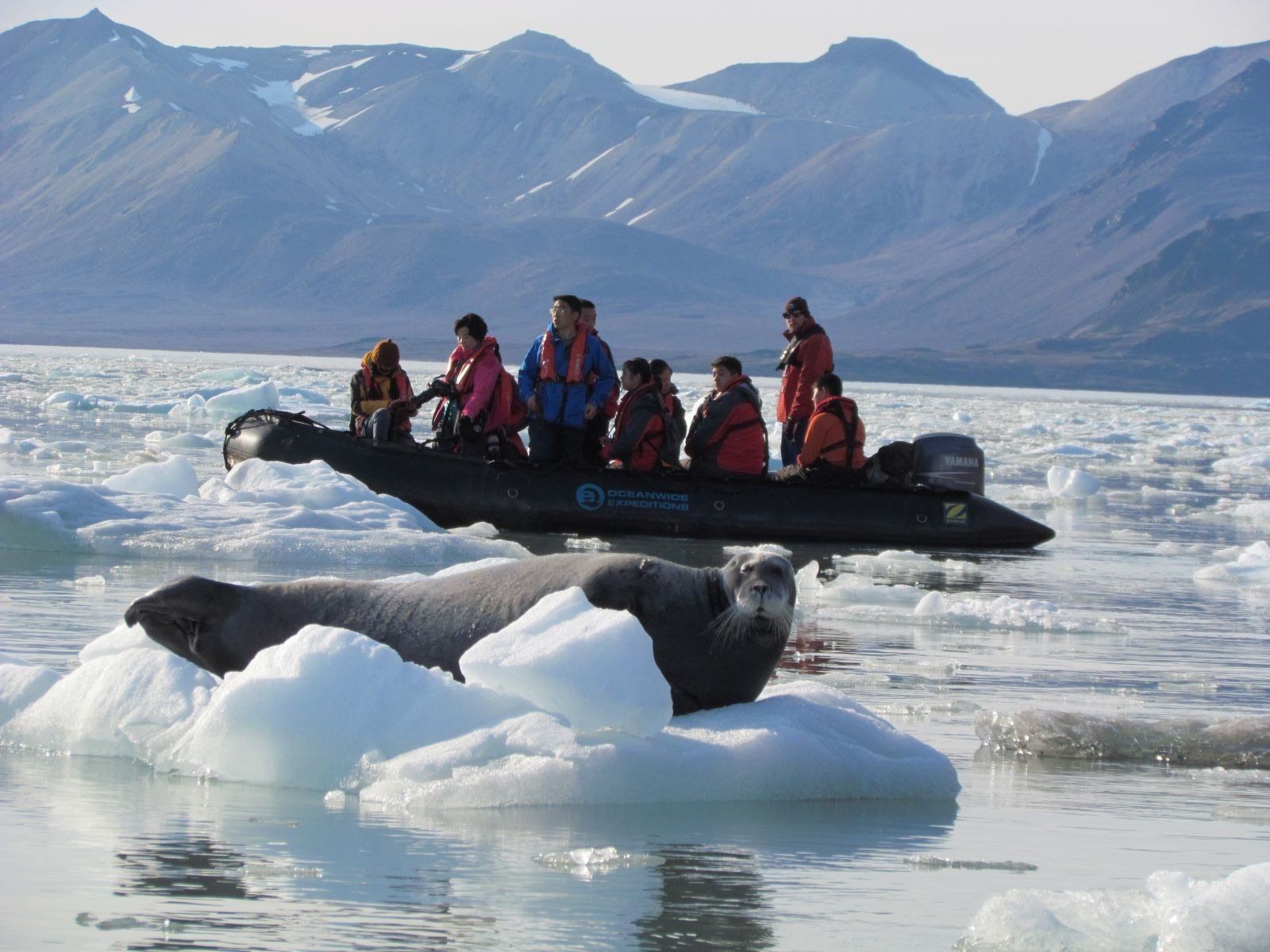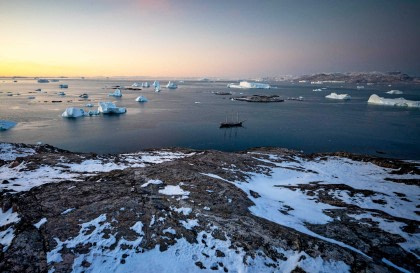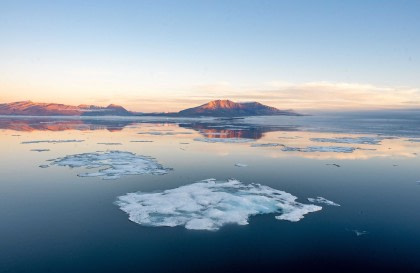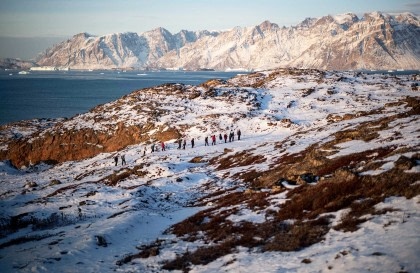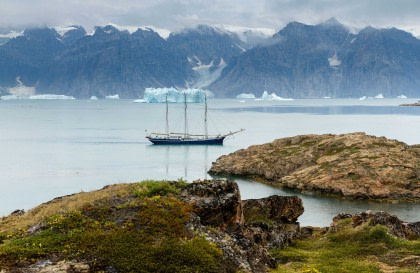Seals play a big role in the history of Greenland. They’ve been a source of food, clothing, and other supplies for centuries and without them it’s possible that there wouldn’t even be a Greenland as we know it at all.
While which variety of seal you’ll see on your Greenland cruise will depend on the time of the year and the weather, there’s a good chance you’ll get to visit with at least one or two of species as they’re found along almost the entire coast of this beautiful island.
Bearded seal
If you happen to see a grand old whiskered man lounging about in solitary splendour then there’s a good chance you’re looking at a bearded seal. Your Greenland cruise visits the bays where these solitary fellows (except for breeding season) hunt out fish in the relatively shallow waters closer to the shores.
Did you know that bearded seals are the largest of the true seal species to be found in the Arctic? Here’s something else you may not have known – the males’ mating songs are so loud that they can be heard as far as 20 km away.

© Josh Harrison Photography - Oceanwide Expeditions
Harbour seal
The harbour seals you might see on your Greenland cruise will probably be found in estuaries and near the mouths of rivers. They can grow up to just shy of 2 metres in length and up to about 120 kg in weight, and can range from grey to brown with a dark speckled pattern.
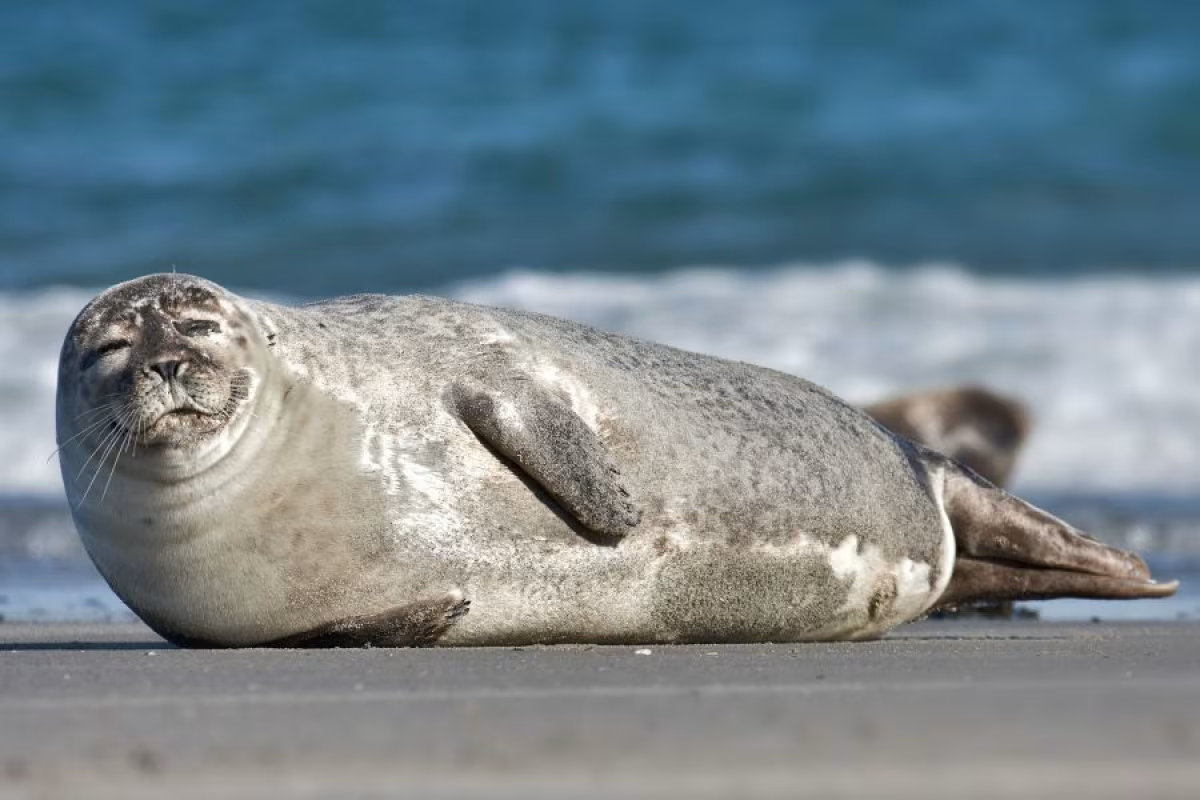
© Andreas Trepte [CC BY-SA 2.5], via Wikimedia Commons
Their large black eyes, which are protected by oil, work very well under dark waters. But they don’t have to rely on sight alone to hunt down fish and other tasty treats – their hearing is nearly 14 times better under water than it is while they’re on the surface or on land. Harbour seals have also extremely sensitive wishers which they use for hunting in dark waters.
Harp seal
The harp seal is probably the variety of seal you’re the most likely to see during your visit to Greenland as they are the most numerous of the species around the island. These are perhaps the species you’re most familiar with, their large soulful black eyes looking out at you from motivational posters and tourism ads.
Their attachment to Greenland is found right in their scientific name Pagophilus groenlandicus which means “ice-lover of Greenland.”
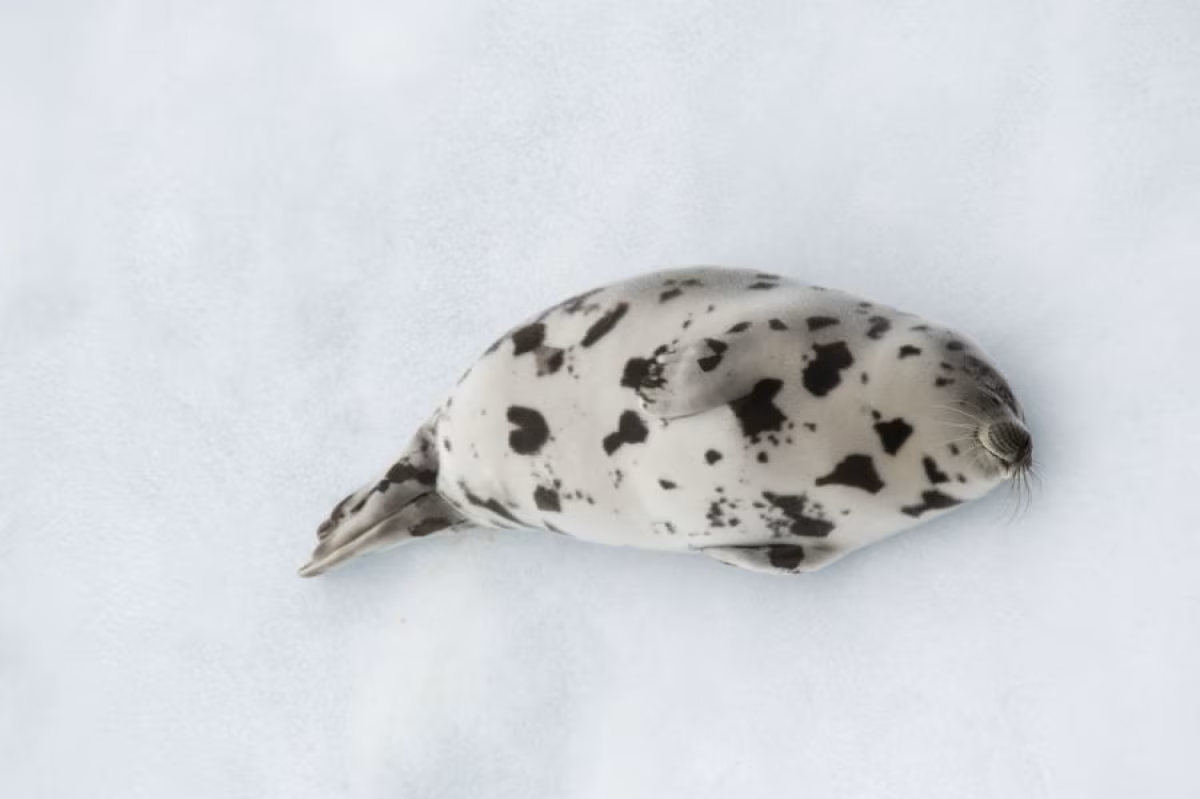
© Josh Harrison Photography-Oceanwide Expeditions
Hooded seal
If you find a seal giving you the stink-eye during your Greenland cruise then chances are it’s a hooded seal. Preferring a solitary life (outside of mating season), hooded seals can be aggressive when it comes to defending their territory.
Hooded seals get their common name from the unique hoods over their nostrils. Tey’ll inflate their hoods into a purplish balloon shape in an effort to to attract females. The hoods also serve another purpose – underwater the hooded seal can use the hoods as a kind of noisemaker to warn other seals that this area has been spoken for.
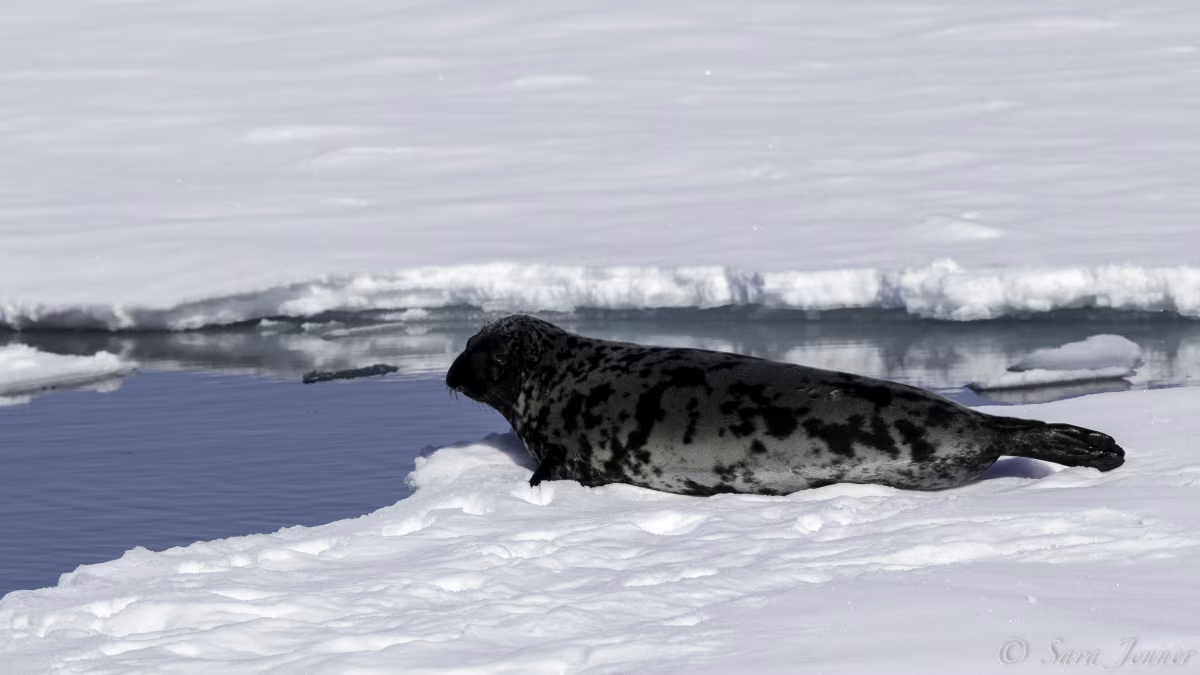
Ringed seals
The ringed seals you might possibly see on your Greenland cruise are the smallest of the local species, topping out at about 1.5 metres in length and 75 kg in weight. What ringed seals lack in size they make up for in numbers – the worldwide population estimates at roughly 2,000,000 individuals.
Ringed seals are the only species that really feel at home in waters that can ice over because they can use their claws (up to 2.5 cm thick) to cut out breathing holes in the ice. Unfortunately that sometimes means that they get pushed out of the way of their own holes by oxygen-starved whales and other species of seal.
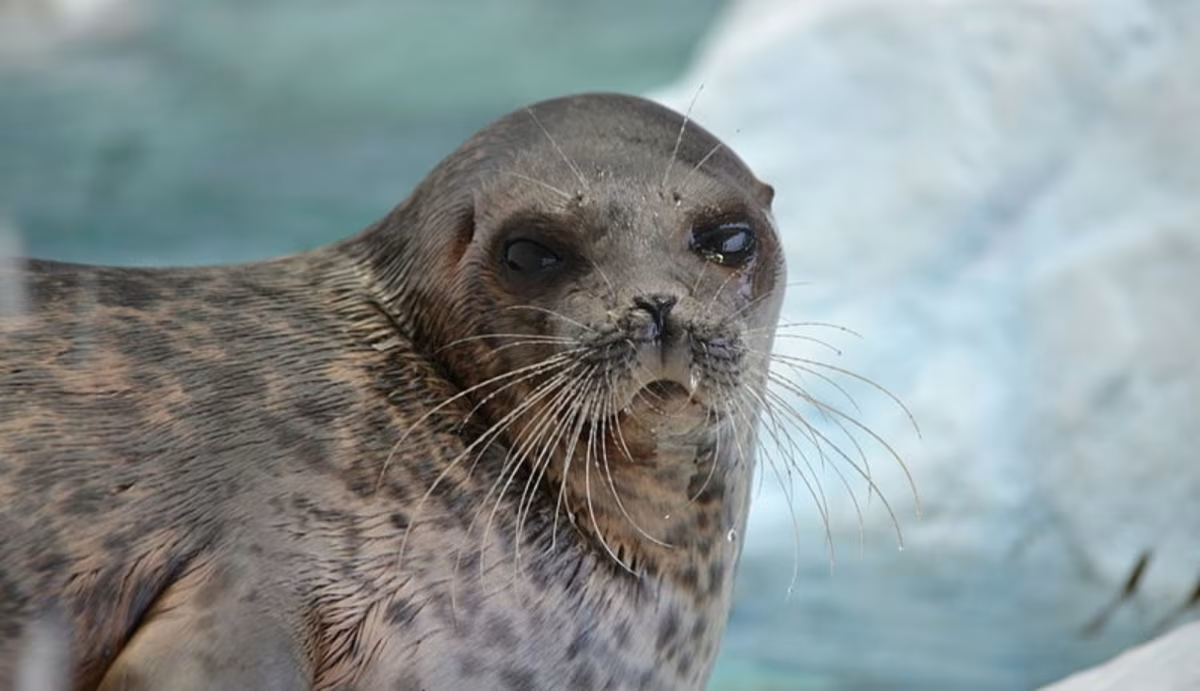
Walrus
You caught us, we cheated a bit. Our sixth marine mammal is not a true seal, it’s the mighty walrus (belonging to the family of Odobenidae). The walruses you’ll see on your Greenland cruise will be fairly easy to distinguish from the seals – they’re much bigger, topping the scales at 1,700 kg, and of course have their world-famous tusks.
Don’t be fooled by their size – these guys can move. They’re able run on all four of their flippers (sort of like a dog) as opposed to most seals having to inchworm their way along the ground on their bellies. It’s estimated that they can “run” almost as fast as humans while on land, and in the water they can burst up to speeds around 35 km per hour.
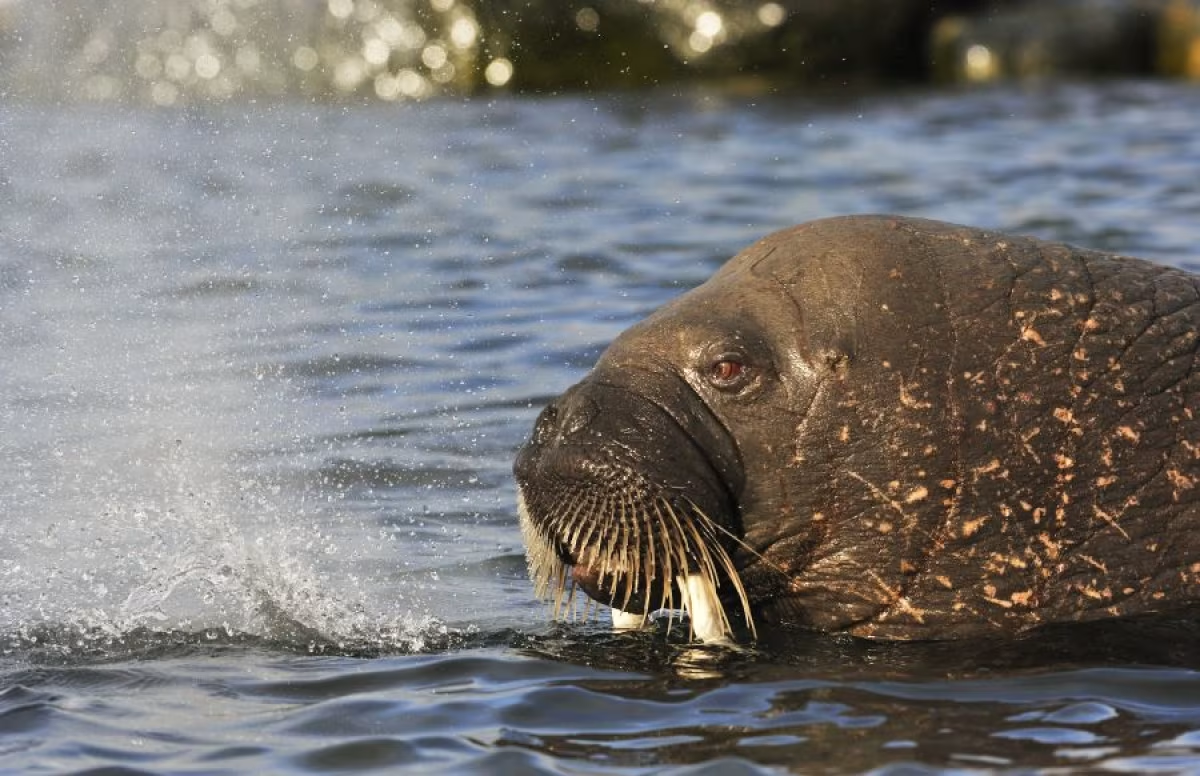
© Petr Slavik - Oceanwide Expeditions
Here’s a bonus informational tidbit – their scientific name Odobenus rosmarus means tooth-walking sea horse.
